We here at Own Harmony believe that the electric callus remover is one of the most effective foot care tools on the market.
For anyone interested in a DIY pedicure or just general footcare hygiene, an electric callus remover is a must-have.
They are easy to use, reliable, travel-friendly, and affordable.
If you deal with dry, chapped heels, calluses, or crusty feet than an electric callus remover may be a great solution for you!
What is an Electric Callus Remover?
An electric callus remover is a handheld device featuring a textured roller that smooths over rough patches and calluses on your feet.
The reason it works is primarily due to its rotating roller head.
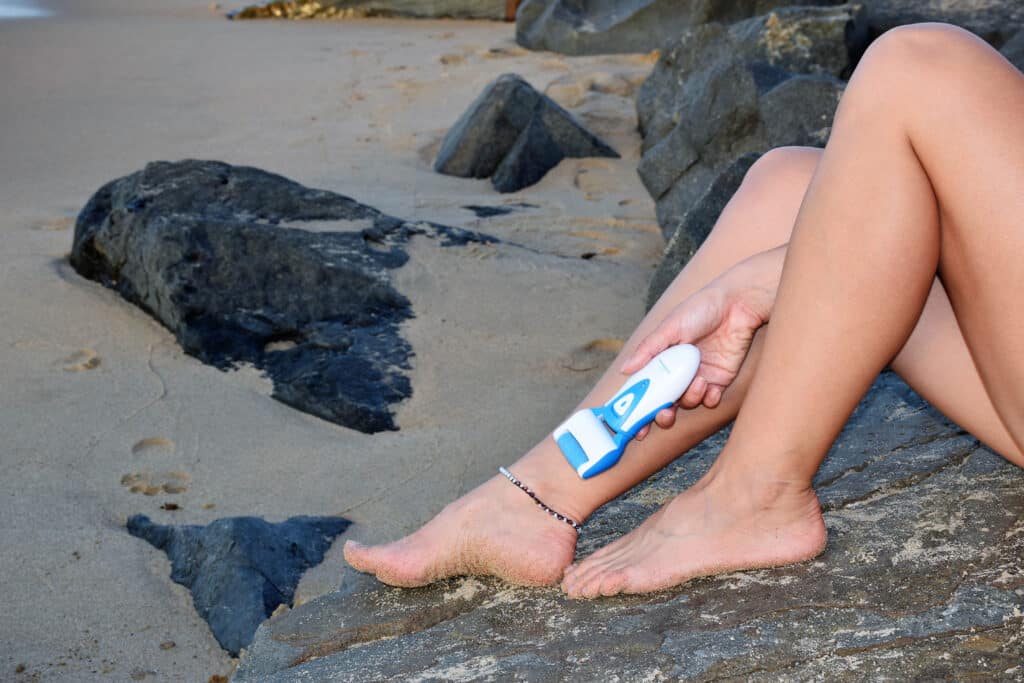
The gritty heads on the electric callus remover safely and effectively remove stubborn calluses.
The heads also smooth and buff the skin for beautiful, healthy feet.
Electric Callus Remover vs. Manual Foot-Files
For general foot care or pedicures, using a callus remover is a necessity.
While there are other tools you can use to smooth away calluses, the electric callus remover is superior due to its many included features.
Here’s how an electric callus remover stacks up to manual foot files:
Electric Callus Remover vs. Pumice Stone
Pumice stones are original pieces of cooled and hardened lava, which form into rough, volcanic rocks.
The “swiss cheese” texture of these rocks now turned pumice stones are exposed gas bubbles created during the lava cooling process.
These hardened gas bubbles are what provide the rough surface used to file away rough, callused skin.
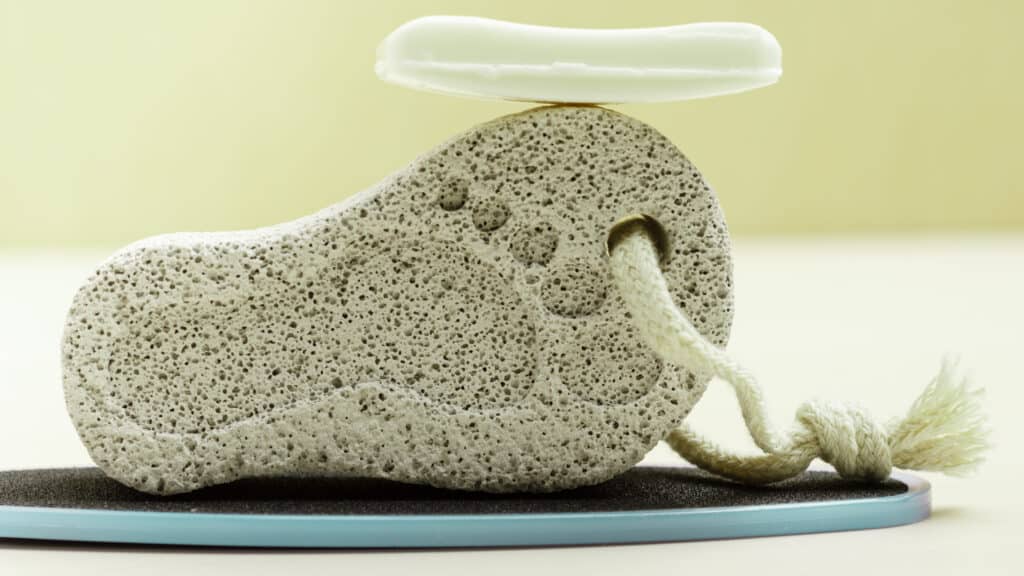
A pumice stone should never be used dry. It needs to be soaked in water before use for maximum effectiveness and to prevent skin damage.
Apply the pumice stone in a circular motion on the callused areas of softened skin. Using firm but gentle pressure, use a pumice stone for only 2-3 minutes on any one area of the foot.
While pumice stones do an excellent job of sloughing off dead skin and removing calluses and corns, the process is manual.
It will take more time and effort to work on all the areas of skin that need attention. If exerting too much pressure, a pumice stone can take off too much skin and result in soreness, bleeding, or pain.
With use, pumice stones break down and become smaller, leaving pieces in your shower.
Pumice stones can also attract mold and bacteria if left in the shower.
Electric callus removers work faster and with less of a mess.
They are also used on softened, dry feet and clean up with proper brushing and rinse.
They don’t attract mold and bacteria like a pumice stone.
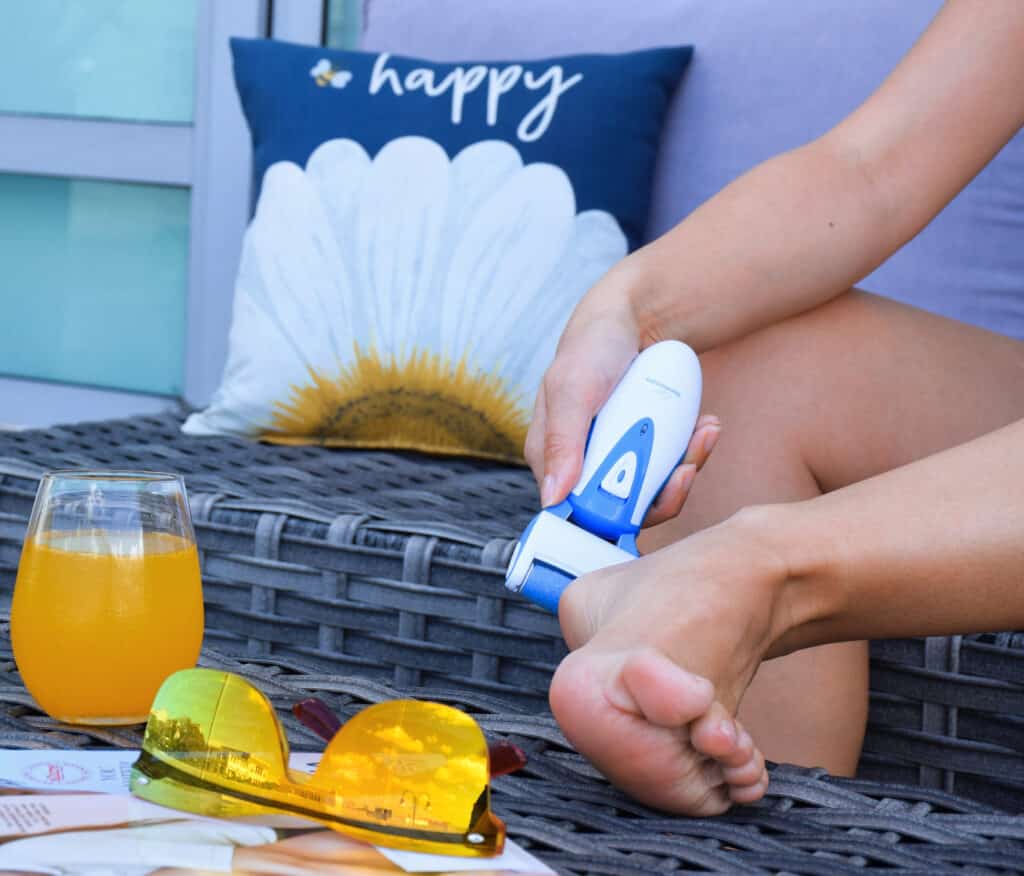
An electric callus remover also allows you to get at that detail work on your feet or sides of toes with a more comfortable grip than you will find with a handheld pumice stone.
Electric Callus Remover vs. Hand Foot File (Foot Grater)
Another pedicure option is a manual foot file, sometimes called a foot grater, to get at those calluses.
A foot file is a handheld, non-electric device used by stroking it over the callus.
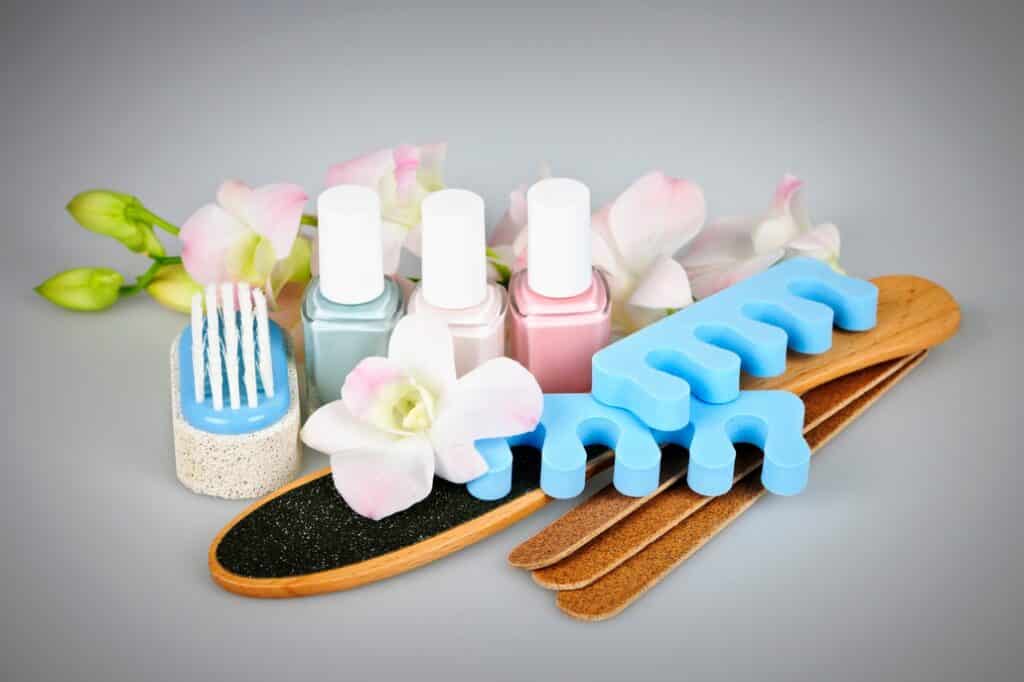
Using gentle strokes, it takes off layers of calluses and dry, flaky skin.
Foot graters are used dry, but only on skin that has been soaked and softened before use.
Foot files and graters are useful because much like the cheese grater in your kitchen, they “grate” at the dead, hardened skin to reveal new, softer skin below.
They’re built from metal in most cases, but you can also find models made of emery or even sprinkled with glass or diamonds.
The most significant danger with foot graters is taking off too much skin, using too frequently or aggressively, which can all cause tearing, pain, bleeding, and increase your risk of infection.
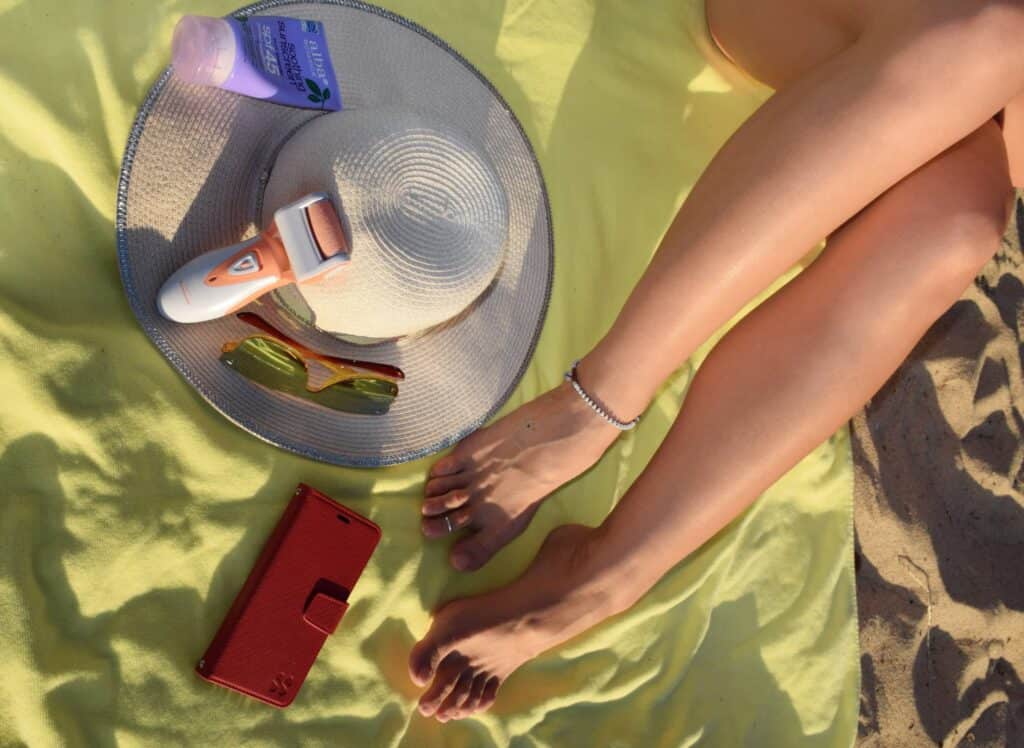
An electric callus remover doesn’t grate or peel the skin, which increases the odds of an injury.
An electric callus remover works by gently sanding away layers of dead, hardened skin with its powerful rotating, gritty head.
Hard, Dead Foot Skin Removal
The ultimate goal of a pedicure is to successfully remove calluses and other areas of rough, thick, hardened patches of skin on your feet.
Once the initial calluses and hard, dead foot skin have been removed, which may take 2-3 sessions, maintenance is easy. Keeping your feet soft and callus-free is even easier with the use of an electric callus remover.
How To Use An Electric Callus Remover
- Charge Fully
- Dry Your Feet
- Turn On
- Run Over Callused Areas
- Repeat On The Other Foot
- Remember To Clean
Using an electric callus remover is just about as easy as flipping the “on” switch.
The best models are rechargeable and last through several uses, so it’s a grab-and-go pedi tool.
Charge Fully
Make sure to charge the electric callus remover before using it for the first time or if it’s been a while since you used it.
A full charge takes about 2 hours, and you’ll be ready to go for several more uses.
You know it’s time to recharge if the rollers start to move more slowly, or it’s not running with as much power as before. The indicator will give you the green light when it’s charged and ready for use.
Dry Your Feet
Step out of a relaxing bath or foot soak and pat your feet dry.
Take a comfortable seat and get ready to use the callus remover either over the tub or over a towel to collect dead skin.
Either option makes clean up so much easier.
Turn On
Turn the callus remover on and start moving around the skin on your feet, focusing primarily on those areas that are flaky and callused.
Run over callused areas
Spend only about 2-3 seconds on each area.
Spending more time on a specific area may result in taking off too much skin even though it doesn’t seem that way at the time.
Apply firm yet gentle pressure until you’ve used the callus remover on your entire foot.
Repeat on the other foot.
Rinse off your feet after using the callus remover and apply some nourishing essential oils or hydrating cream. Slip your feet into some cotton socks until the lotion cream or oil is absorbed, and you’re done!
Remember to clean
Clean the electric callus remover after each use to keep it functioning properly for next time and hygiene purposes. Use the cleaning brush that comes with the callus remover and then run underwater for 5-10 seconds with the roller in the on position.
Turn the device off and wipe dry with a clean cloth. Always keep the protective cover on the roller head when not in use.
More Options?
There are still other options to use for professional-looking pedicures right at home.
Foot Masks
Slip your feet into a foot mask to remove calluses and make your feet soft.
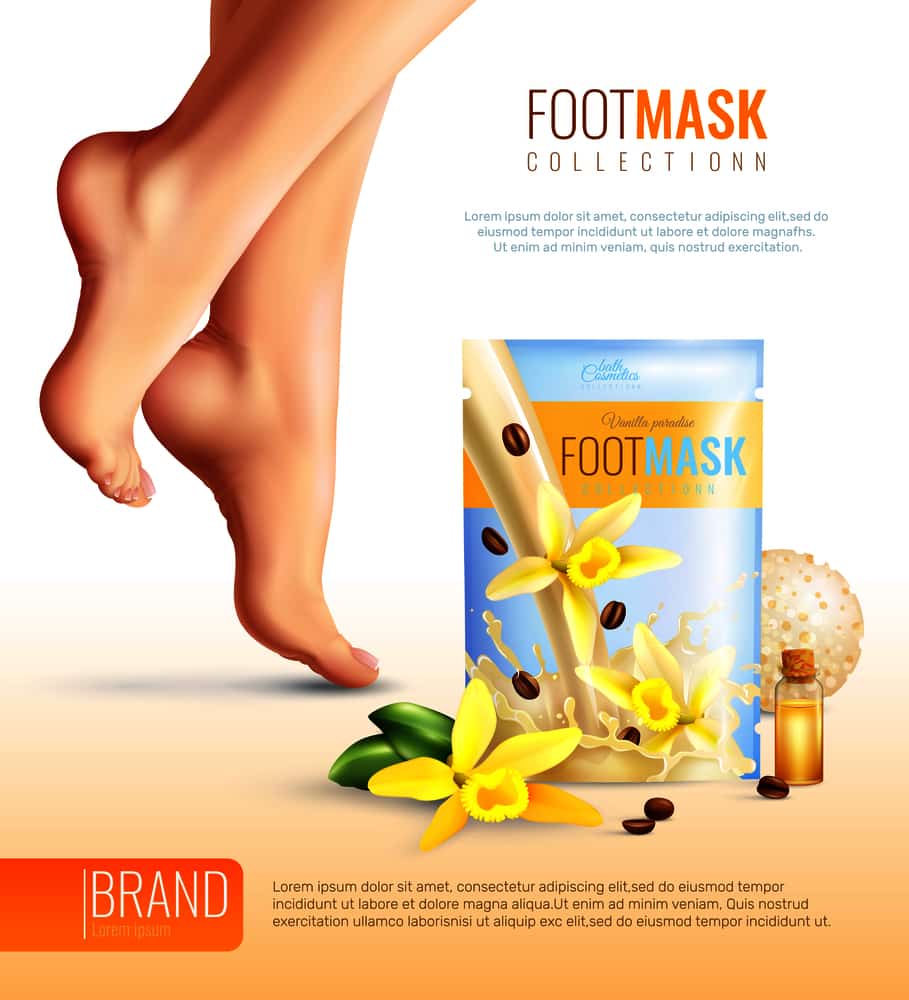
Foot masks fit over the feet, much like booties.
They come with an exfoliating acid, typically a fruit acid, which will work over a few days to peel the rough skin and calluses from the feet.
Callus Remover Cream, Lotion or Gel
Next up is an exfoliating cream that, when applied, goes to work to soften the hard, dead skin on your feet. While wearing gloves, apply the cream onto callused skin and rub in.
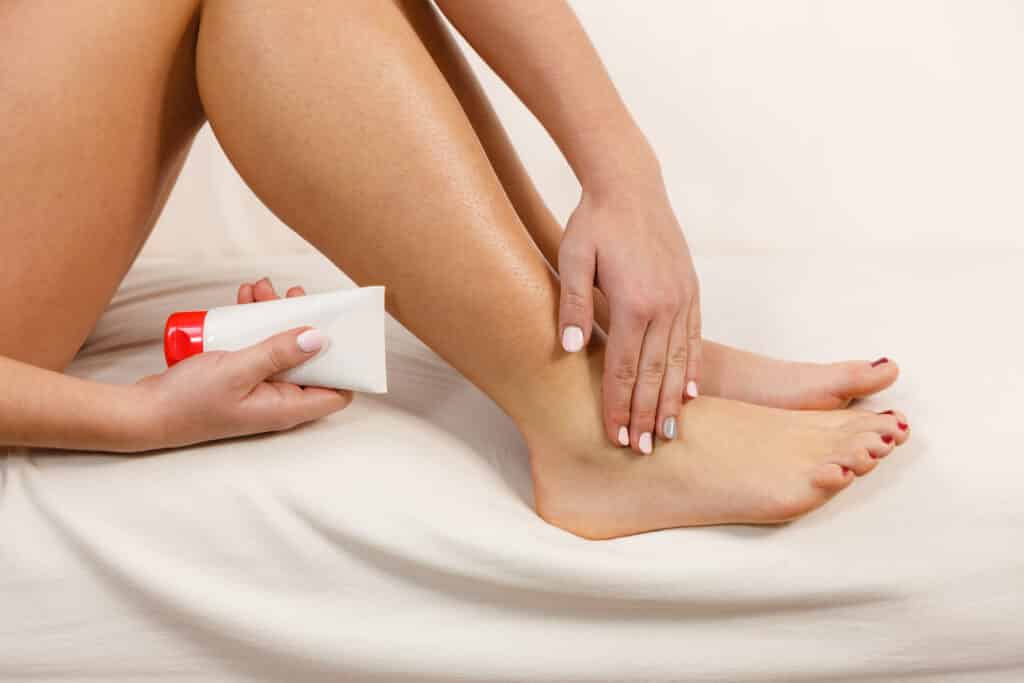
Slide into some cotton socks and let the cream work its exfoliating magic to soften and dissolve the hard layers of skin.
Active ingredients to watch for include Urea or Salicylic acid.
Foot Soaks
For the most basic treatment for the prettiest of bare feet, an old-fashioned foot soak softens up hard, dead calluses.
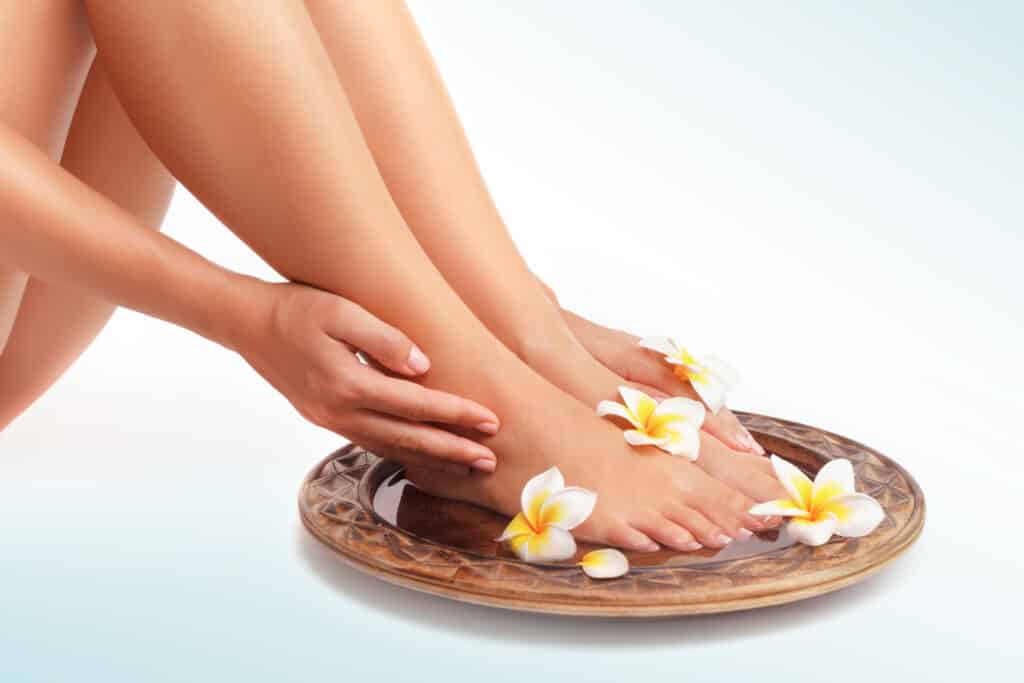
Add Epsom salts or essential oils to the foot soak for added comfort and extra softening of your skin.
After approximately ten minutes, pat feet dry and follow up with a thick, creamy lotion or foot butter to keep skin soft and hydrated.
Choosing an Electric Callus Remover
Best features out there:
Rechargeable
A rechargeable electric callus remover is ideal because much like your cell phone, you’ll be using it a lot and want it to be fully charged and ready to go.
Long Charge Life
Ideally, look for a model with a long charge life. You should be able to use your electric callus removal several times before having to recharge. It saves a lot of time and will always be ready for you to use when the inspiration hits or for quick touch-ups.
Easy to Use
Being able to flip the on-switch and exfoliate away dead, peeling, scaly skin and work on those calluses shouldn’t take a lot of time or effort. Choose a model that is easy to use.
Ergonomic Handle
The handle design is essential because you need to move around the feet and toes easily and comfortably. The ideal model will be comfortable while you are holding and using it.
High Powered Motor
Power is another important feature because you want to quickly tackle the tough, rough skin on the heels, balls, and sides of toes.
Easy Maintenance
An easy to maintain model saves time. If it requires a lot of upkeep, cleaning, or maintenance, you’re not going to be as willing to use your callus remover. Look for a device that requires minimal maintenance like brushing and a quick rinse.
Editor’s Choice
The model that ticks all our boxes is the Own Harmony Electric Callus Remover.
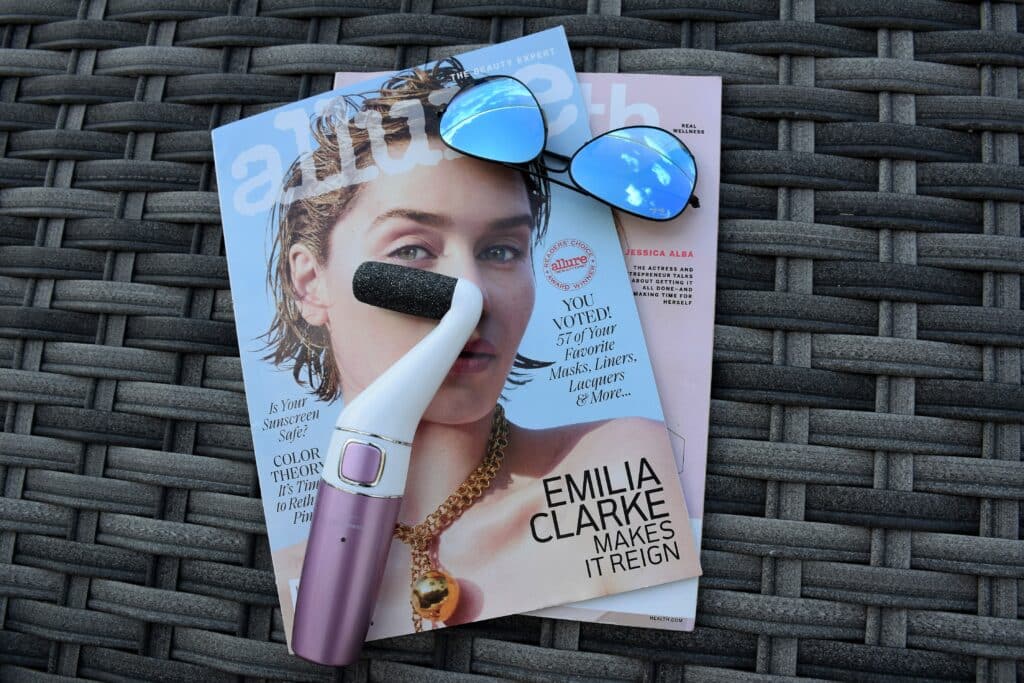
Here’s why:
Power. Once charged, this model has a 360-degree rotating head that powers away layers of hard, dry, callused skin with nothing but gentle pressure. It does most of the work for you.
Rechargeable for Several Uses. One full charge lasts for several uses, depending on how long you use it and how often. Plug it in for just a couple of hours, and you’re up and running again in no time.
Size. It’s just the right size. It’s not big and bulky and not too small to effectively treat the entire foot. It doesn’t require a lot of storage space.
Ergonomically Correct Design. The Own Harmony Electric Callus Remover feels good and doesn’t strain your hand during use.
Safe. As compared to other methods for removing calluses, it buffs away layers of dry, dead skin instead of an alternative using sharp blades, grates, or scrapers.
Easy to Use. Turn it on, and it’s ready to remove even the driest and roughest patches of skin. It doesn’t get any easier to have beautiful feet.
Easy to Clean. Brush, rinse, and dry off with a clean towel is all it takes to keep the Own Harmony Electric Callus Remover clean and ready to go for the next time.
Since calluses are a fact of life, spending a few minutes per week with an electric callus remover is the quick and easy answer for removing unsightly, stubborn calluses and keeping them at bay.
